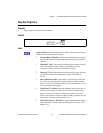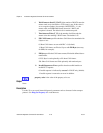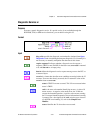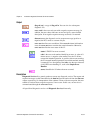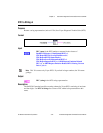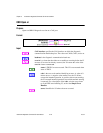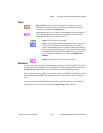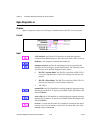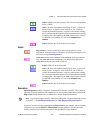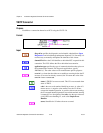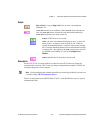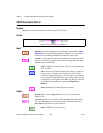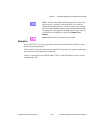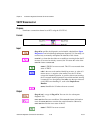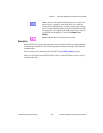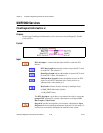
Chapter 5 Automotive Diagnostic Command Set API for LabVIEW
© National Instruments Corporation 5-25 Automotive Diagnostic Command Set User Manual
status is TRUE if an error occurred. This VI is not executed when
status is TRUE.
code is the error code number identifying an error. A value of 0
means success. A negative value means error: the VI did not
execute the intended operation. A positive value means warning:
the VI executed intended operation, but an informational warning
is returned. For a description of the code, wire the error cluster to
a LabVIEW error-handling VI, such as the Simple Error
Handler.
source identifies the VI where the error occurred.
Output
diag ref out is a cluster containing all necessary diagnostic session
information. Wire this cluster as a handle to all subsequent diagnostic VIs
and close it using Close Diagnostic.vi.
error out describes error conditions. If the error in cluster indicated an
error, the error out cluster contains the same information. Otherwise,
error out describes the error status of this VI.
status is TRUE if an error occurred.
code is the error code number identifying an error. A value of 0
means success. A negative value means error: the VI did not
execute the intended operation. A positive value means warning:
the VI executed intended operation, but an informational warning
is returned. For a description of the code, wire the error cluster to
a LabVIEW error-handling VI, such as the Simple Error
Handler.
source identifies the VI where the error occurred.
Description
Open Diagnostic.vi opens a diagnostic communication channel to an ECU. The CAN port
specified as input is initialized, and a handle to it is stored (among other internal data) in the
diag ref out cluster, which serves as reference for further diagnostic functions.
Note No communication to the ECU takes place at this point. To open a diagnostic session
on the ECU, call StartDiagnosticSession.vi or UDS DiagnosticSessionControl.vi.
In general, it is not necessary to manipulate the diag ref out cluster contents, with one notable
exception: If you use the ISO TP—Mixed Mode transport protocol, you must store the
address extensions for transmit and receive in the appropriate cluster members.



